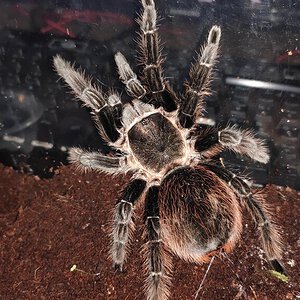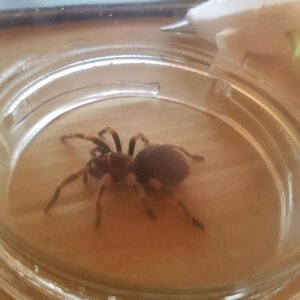Media information
- Category
- Tarantula Identification
- Added by
- Uvuvuvwebweh
- Date added
- View count
- 903
- Comment count
- 6
- Rating
- 0.00 star(s) 0 ratings
Image metadata
- Filename
- D2E4832E-920C-478F-BF5A-727B04F451DD.jpeg
- File size
- 2.4 MB
- Dimensions
- 4032px x 3024px




![What kind of tarantula? [2/2]](/data/xfmg/thumbnail/68/68984-7a450b3bd7bb89d3e2301814cbd1cb0c.jpg?1587640236)
![What kind of tarantula? [1/2]](/data/xfmg/thumbnail/68/68983-38eb3fa2749e6e388fc17e8cf719d495.jpg?1587640219)

